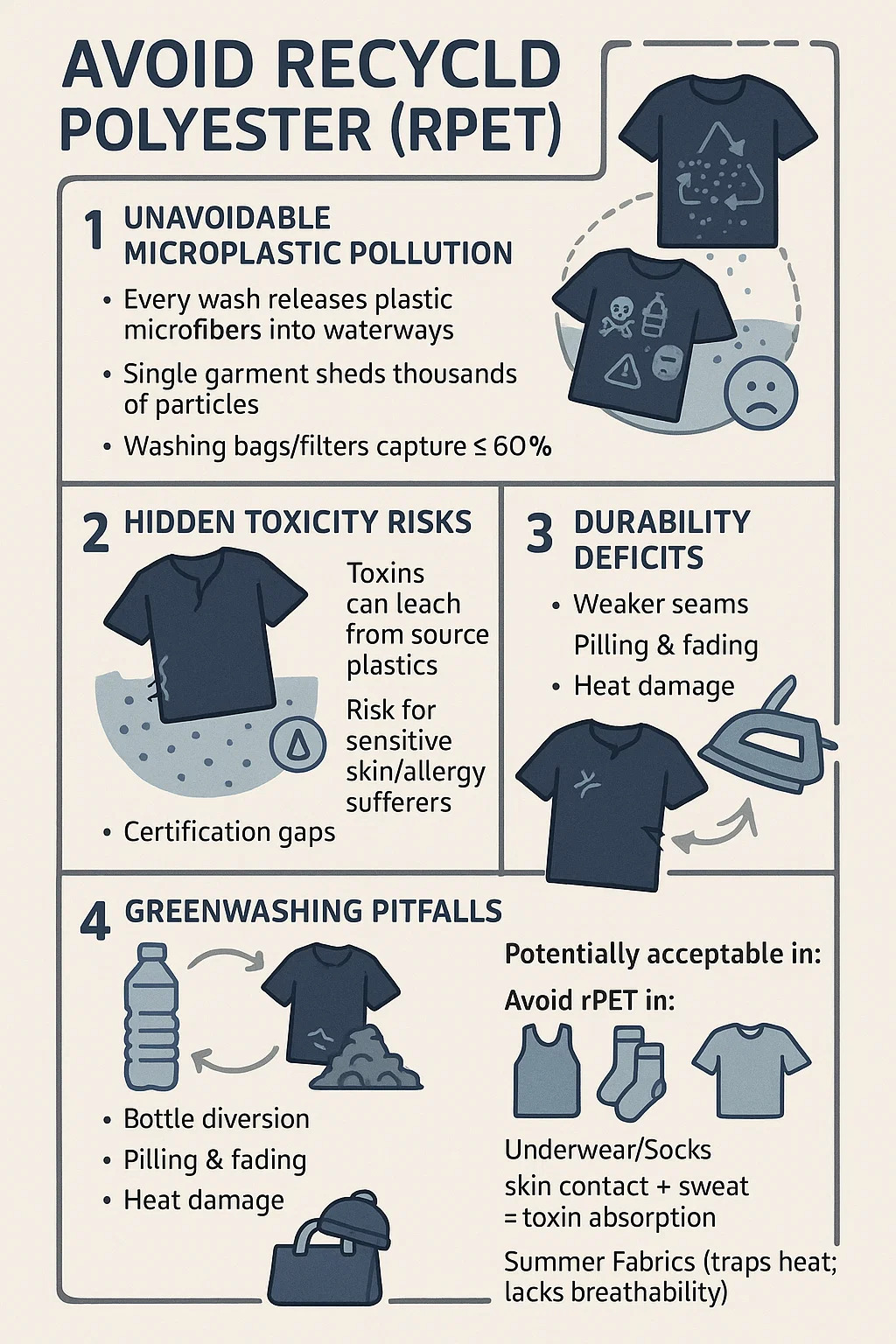Search by posts
Calendar
Industry News
 By Admin
By Admin
Recycled polyester should be avoided in clothing?
Whether to avoid recycled polyester (rPET) in clothing hinges on critical trade-offs between sustainability intentions and practical drawbacks.
Content
The Core Issue: Every wash releases plastic microfibers into waterways.
Scale: A single rPET garment sheds thousands of microplastic particles per wash cycle.
No Solution: Washing bags/filters capture ≤60%; residual contamination persists.
2. Hidden Toxicity Risks
Chemical Inheritance: rPET absorbs toxins from source plastics (bottle dyes, BPA, flame retardants).
Skin Contact: Toxins leach via sweat, posing risks for sensitive skin/allergy sufferers.
Certification Gaps: "OEKO-TEX 100" tests limited chemicals; unknown additives slip through.
3. Durability Deficits
Weak Seams: Shorter recycled fibers tear at stress points (armpits, collars).
Pilling & Fading: Surface fuzz emerges quickly; colors dull after few washes.
Heat Damage: Deforms at lower temperatures than virgin polyester (irons/steamers ruin it).
4. Greenwashing Pitfalls
Bottle Diversion: Using drink bottles for clothes disrupts bottle-to-bottle recycling (a true circular loop).
Blended Deception: "50% rPET" often means 50% virgin polyester—still plastic dependency.
False "Ocean Plastic": Most "ocean-bound" rPET uses coastal trash, not actual ocean waste.
5. Situational Exceptions
Avoid rPET in:
Activewear (friction = microplastic shedding ↑↑↑)
Underwear/Socks (skin contact + sweat = toxin absorption)
Summer Fabrics (traps heat; lacks breathability)
Potentially acceptable in:
Winter Coat Shells (low-wash frequency, minimal skin contact)
Accessories (bags, hats) washed rarely


